How to Choose the Perfect Dog Breed for Outdoor Adventures
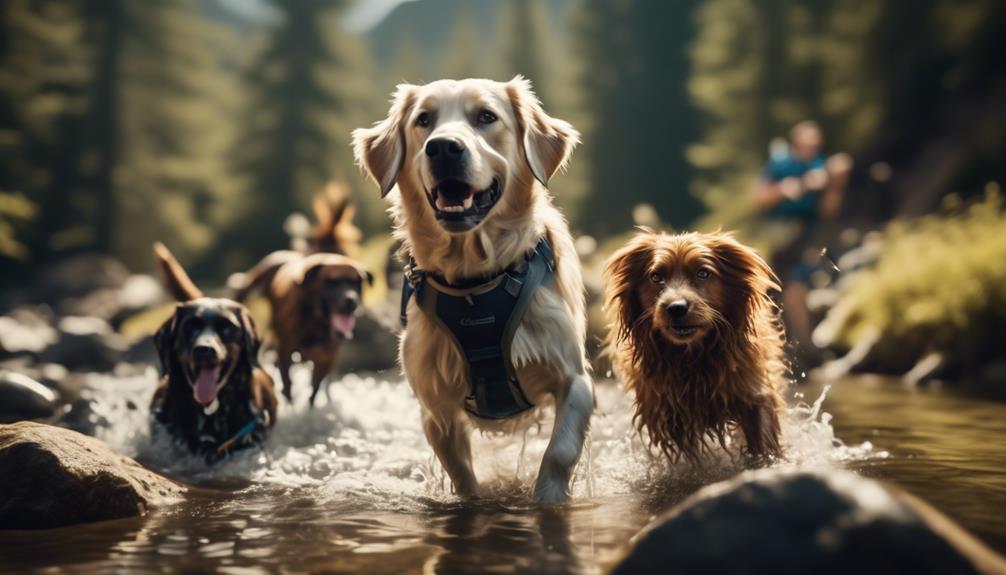
Choosing the perfect dog breed for outdoor adventures can be an exciting but challenging task. It's important to consider several factors before making a decision. First, think about the size of the dog. Larger breeds like Labrador Retrievers or German Shepherds are often better suited for outdoor activities like hiking or running. They have the stamina and strength to keep up with you. On the other hand, smaller breeds like Jack Russell Terriers or Beagles may not have the endurance for long hikes or intense activities. Second, consider the energy level of the dog. Some breeds are naturally more active and require plenty of exercise and mental stimulation. Border Collies or Australian Shepherds are known for their high energy levels and need constant activity. If you're an avid hiker or runner, these breeds may be a good fit for you. Third, think about the breed's temperament and adaptability. Some dogs are more adaptable to different environments and climates, while others may struggle. If you enjoy camping or traveling to different locations for outdoor adventures, consider a breed that is known for being adaptable and easygoing. Finally, don't forget about the dog's coat type. If you live in a cold climate or enjoy winter activities like skiing or snowshoeing, a breed with a thick double coat like a Siberian Husky or Alaskan Malamute may be a good choice. Conversely, if you live in a hot climate or plan on doing activities in the summer, a breed with short hair or a lighter coat may be more comfortable. Overall, choosing the perfect dog breed for outdoor adventures requires careful consideration of factors such as size, energy level, temperament, adaptability, and coat type. It's important to find a breed that matches your activity level and lifestyle to ensure a happy and healthy partnership.
Key Takeaways
- Evaluate the type, duration, and intensity of outdoor activities to determine the dog breed that will excel in those activities.
- Consider the energy and exercise needs of different breeds, as some require more vigorous exercise than others.
- Take into account the size and physical ability of the dog breed, as larger and more robust breeds are better suited for strenuous activities.
- Assess the temperament and trainability of different breeds, as working dog breeds with high energy levels tend to thrive in outdoor environments.
Consider Your Outdoor Activity Preferences
What outdoor activities do you enjoy, and how can you find a dog breed that matches your preferences and interests?
When it comes to choosing a dog breed for outdoor adventures, it's essential to consider your specific outdoor activity preferences. Evaluating the type of outdoor activities you engage in will help you find a dog breed that can keep up with your adventures.
Think about the activities you enjoy, whether it's hiking, running, swimming, or any other outdoor pursuit. Each dog breed has different abilities and interests, so it's crucial to match their characteristics with your preferred activities. Consider the duration and intensity of your outdoor adventures as well. Some breeds have higher energy levels and endurance, making them ideal companions for more strenuous activities.
Additionally, take into account the environment in which you prefer to engage in outdoor activities. Do you enjoy mountain trails, beaches, or snowy landscapes? Different breeds thrive in specific settings, so finding a breed suitable for your preferred environments is important.
If you participate in specialized outdoor activities like backpacking or trail running, look for a breed that excels in those areas. Some breeds are better suited for these types of activities due to their physical abilities and agility.
Lastly, consider whether you prefer solo outdoor adventures or participating in group activities. Some breeds are more social and enjoy interacting with others, while others prefer one-on-one bonding experiences.
Assess the Energy and Exercise Needs
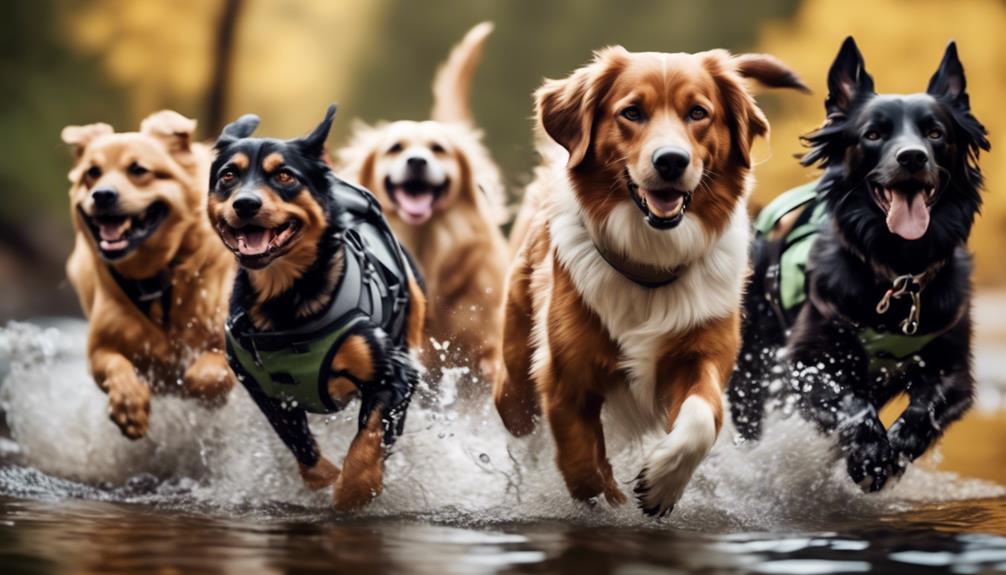
Assessing the energy and exercise needs of a dog breed is crucial when choosing a companion for your outdoor adventures. Different breeds have varying levels of energy and exercise requirements, so it's important to find a dog that matches your activity level and preferences.
For example, Siberian Huskies are known for their high energy levels and need for vigorous exercise. They thrive in cold climates and are well-suited for activities such as hiking and sledding.
Australian Cattle Dogs are also highly energetic and require plenty of physical and mental stimulation. They excel in activities like agility training and herding.
Labrador Retrievers are another popular choice for outdoor enthusiasts. They've a moderate to high energy level and enjoy activities such as swimming, hiking, and playing fetch.
German Shorthaired Pointers are known for their athleticism and stamina. They're excellent companions for activities like running, biking, and hunting.
When considering a dog breed for outdoor adventures, it's essential to evaluate their energy and exercise needs to ensure a compatible and fulfilling partnership.
Evaluate Size and Physical Ability
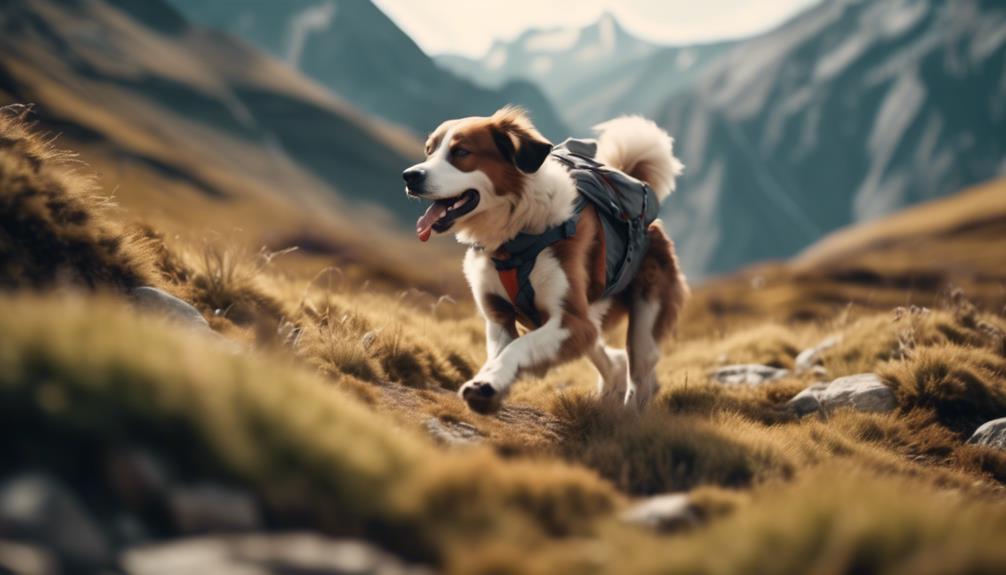
When selecting a dog breed for outdoor adventures, it is crucial to evaluate the size and physical ability of the dog. Larger, more robust breeds are great choices for strenuous activities like hiking and running. These breeds often possess the endurance and stamina necessary for long outdoor excursions. Additionally, physical strength and agility are essential for activities such as backpacking and trail running. It is important to consider the dog's potential limitations due to their size and ensure they can comfortably participate in outdoor activities.
To help in the evaluation process, the following table provides information on some dog breeds that are originally bred for outdoor adventures. These breeds are known for their physical abilities and make great companions for outdoor enthusiasts. They often have thick coats to protect them from the elements and require plenty of exercise to keep them happy and healthy.
| Breed | Size | Physical Ability |
|---|---|---|
| Labrador Retriever | Large | High |
| German Shepherd | Large | High |
| Siberian Husky | Medium | High |
| Border Collie | Medium | High |
Research the Temperament and Trainability

To ensure a successful and enjoyable outdoor adventure with your dog, it's crucial to thoroughly research the temperament and trainability of different dog breeds. When it comes to outdoor activities, certain breeds are better suited due to their working dog nature and high energy levels.
Border Collies, Belgian Malinois, Shorthaired Pointers, and Siberian Huskies are all breeds known for their ability to thrive in outdoor environments. These working dogs have been bred for specific tasks, such as herding livestock or hunting, which has instilled in them a strong work ethic and a natural inclination for physical activities. Their energy levels are often unmatched, making them excellent companions for outdoor adventures.
When considering a breed for outdoor activities, it's essential to assess their trainability. Some breeds, like Border Collies and Belgian Malinois, are highly intelligent and eager to please, making them relatively easy to train. They're quick learners and are responsive to commands, which enhances safety and enjoyment during outdoor adventures.
On the other hand, breeds like Shorthaired Pointers and Siberian Huskies can be more independent and stubborn, requiring consistent and patient training. While they may require more effort to train, their natural abilities and instincts can make them excellent partners for outdoor activities.
Take Climate and Weather Into Account
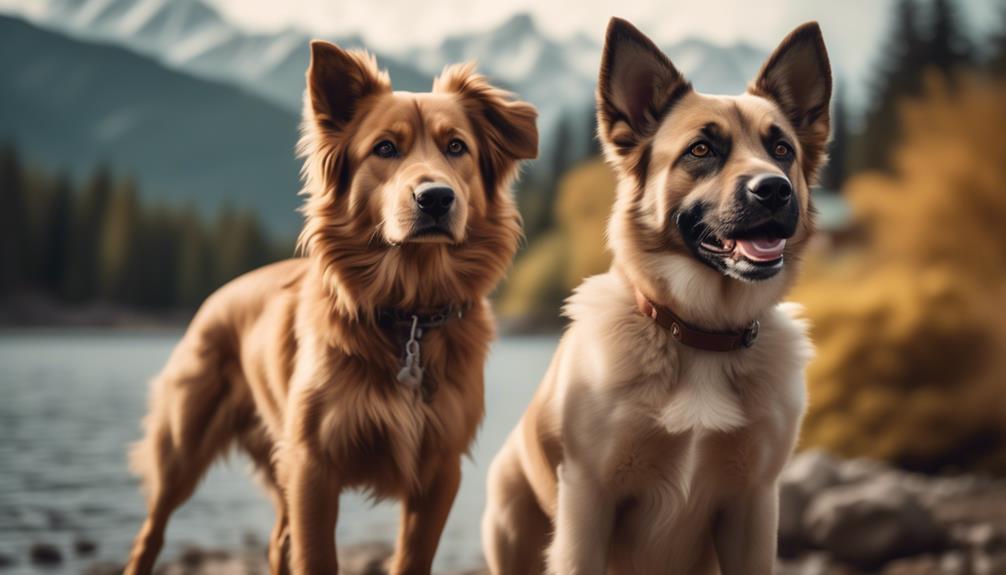
Consider the climate and weather conditions of your outdoor adventures when selecting a dog breed that will thrive in those specific environments. Different breeds have varying coat types that are better suited for specific weather conditions, so it is important to take into account the climate you will be adventuring in. Dogs built for cold climates, like the Siberian Husky, may not fare well in hot, sunny environments, while breeds like the Australian Cattle Dog are better suited for warmer climates. It is crucial to evaluate how the climate and weather of your outdoor activities might affect the dog breed's comfort and safety. Choosing a dog breed that can handle the specific climate and weather conditions of your outdoor adventures will ensure that both you and your furry companion can fully enjoy your time together.
To help you in your decision-making process, here is a table outlining some dog breeds and their suitability for different climates and weather conditions:
| Breed | Climate Preference |
|---|---|
| Siberian Husky | Cold and snowy climates |
| Australian Cattle Dog | Warm and sunny climates |
| Border Collie | Moderate climates |
| German Shorthaired Pointer | All climates, but prefers moderate temperatures |
| Labrador Retriever | Adaptable to various climates |
Before making a choice, it is important to understand the specific breed needs and consider the activities you plan to engage in during your outdoor adventures. Some breeds, like the Border Collie and German Shorthaired Pointer, thrive on high energy dog sports, while others may prefer more relaxed activities. By taking climate and weather into account, you can ensure that you find a dog breed that is not only suitable for your outdoor adventures but also a perfect companion for your lifestyle.
Consider the Dog's Lifespan and Health Issues
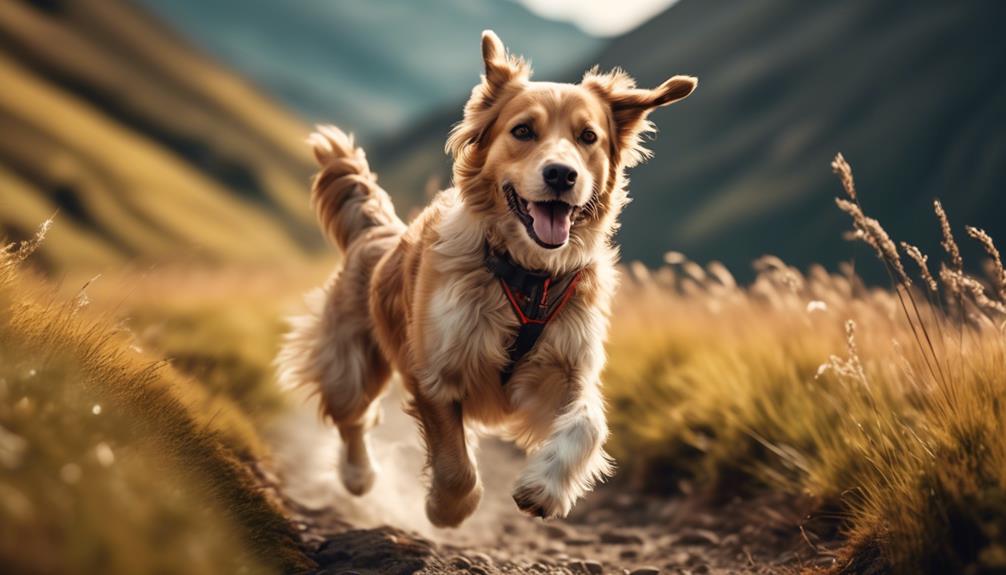
Taking into account the dog's potential health issues and lifespan is crucial when selecting a breed for outdoor adventures. Different dog breeds have varying lifespans, and it's important to consider how long a dog will typically live when choosing a companion for outdoor activities. Some breeds may have shorter lifespans due to genetic factors or health concerns, which could impact their ability to participate in rigorous outdoor adventures.
Additionally, certain dog breeds are prone to specific health issues that may affect their ability to engage in outdoor activities. For example, breeds with short snouts, such as Bulldogs or Pugs, may have difficulty breathing in hot weather or during strenuous exercise. On the other hand, breeds with long backs, such as Dachshunds, may be more susceptible to spinal issues or injuries when navigating rough terrains.
To ensure the suitability of a specific breed for outdoor adventures, it's important to research the common health concerns associated with that breed. This will help potential dog owners understand the potential health implications for specific breeds in outdoor settings.
Consulting with a veterinarian or a breed expert can provide valuable insights into the potential health issues that may arise in specific dog breeds during outdoor adventures. These professionals can offer guidance on which breeds are better suited for outdoor activities based on their intelligence, physical capabilities, and overall health.
Factor in Your Lifestyle and Commitment Level
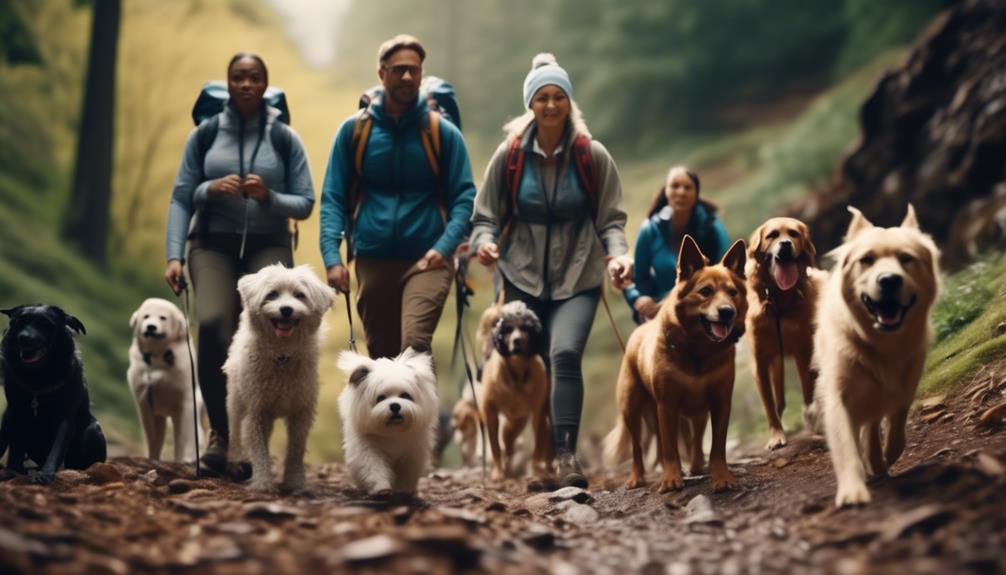
When selecting a dog breed for outdoor adventures, it's important to factor in your lifestyle and level of commitment. Here are three key considerations to help you make the right choice:
- Activity level and time commitment:
Assess your own activity level and the amount of time you can dedicate to exercising and training a dog for outdoor adventures. Some breeds, like Border Collies and German Shepherds, are highly energetic and require extensive exercise and mental stimulation. Others, such as Basset Hounds and Bulldogs, have lower energy levels and may be better suited for less demanding outdoor activities.
- Energy level and enthusiasm:
Look for a dog breed that matches your own energy level and enthusiasm for outdoor activities. If you're an avid hiker or runner, a breed like the Labrador Retriever or Australian Shepherd may be a great fit. On the other hand, if you prefer leisurely walks or casual hikes, a smaller breed like a Beagle or Cocker Spaniel might be more appropriate.
- Exercise and stimulation requirements:
Evaluate the dog's exercise and stimulation requirements to ensure they align with your lifestyle and commitment level. Some breeds, such as Siberian Huskies and Border Terriers, have high exercise needs and require plenty of mental stimulation. If you're unable to meet these requirements, it may result in behavioral issues or an unhappy dog.
Frequently Asked Questions
What Dogs Are Best for Adventure?
The best breeds for adventure include the German Shepherd, Labrador Retriever, and Border Collie. These dogs excel in hiking, backpacking, and outdoor activities due to their high energy levels, endurance, and agility.
Which Dog Breeds Prefer to Be Outside?
Active breeds, such as Border Collies and Labrador Retrievers, love outdoor activities. These dogs thrive in outdoor environments, exploring the wilderness on long hikes and rugged terrains. They are also water-loving companions and all-weather adventurers, making them ideal for outdoor adventures.
What Is the Best Dog to Go Camping With?
When it comes to camping, the best dog to bring along is one that loves the outdoors and has the energy for adventure. Breeds like Border Collies, Labs, and Huskies are great choices for outdoor enthusiasts.
How Do You Know Which Breed of Dog Is Right for You?
Factors to consider when choosing a dog breed for outdoor adventures include physical characteristics such as stamina and coat type, as well as temperament traits like adaptability and confidence. Assessing a dog's energy level and exercise needs, researching different breeds, and consulting with experienced outdoor enthusiasts can help determine the right breed for you.









